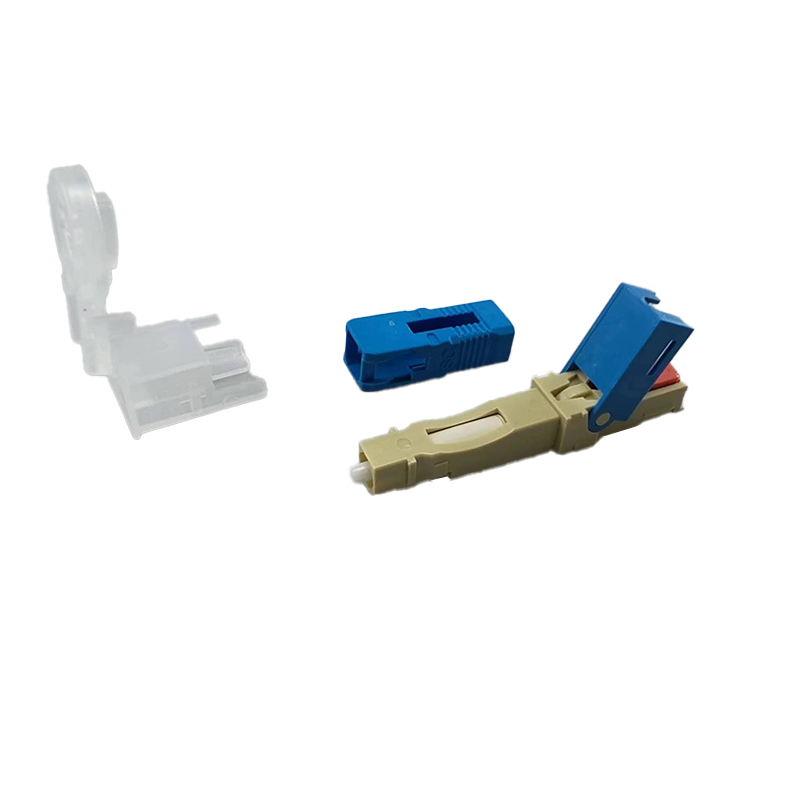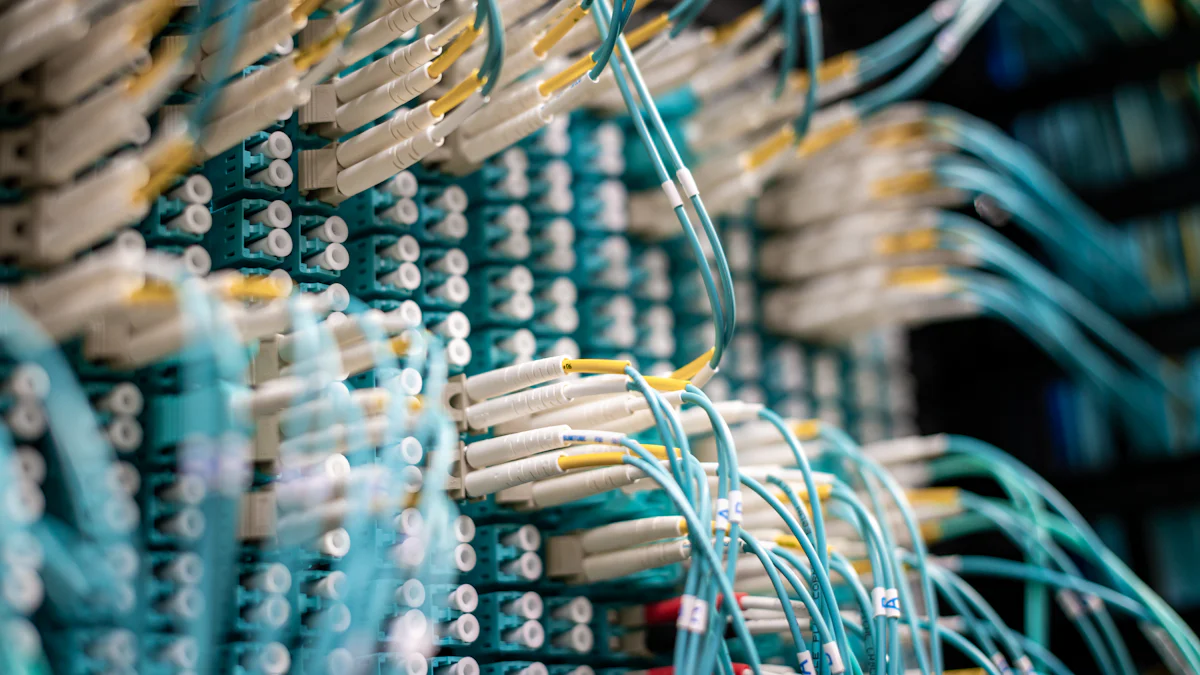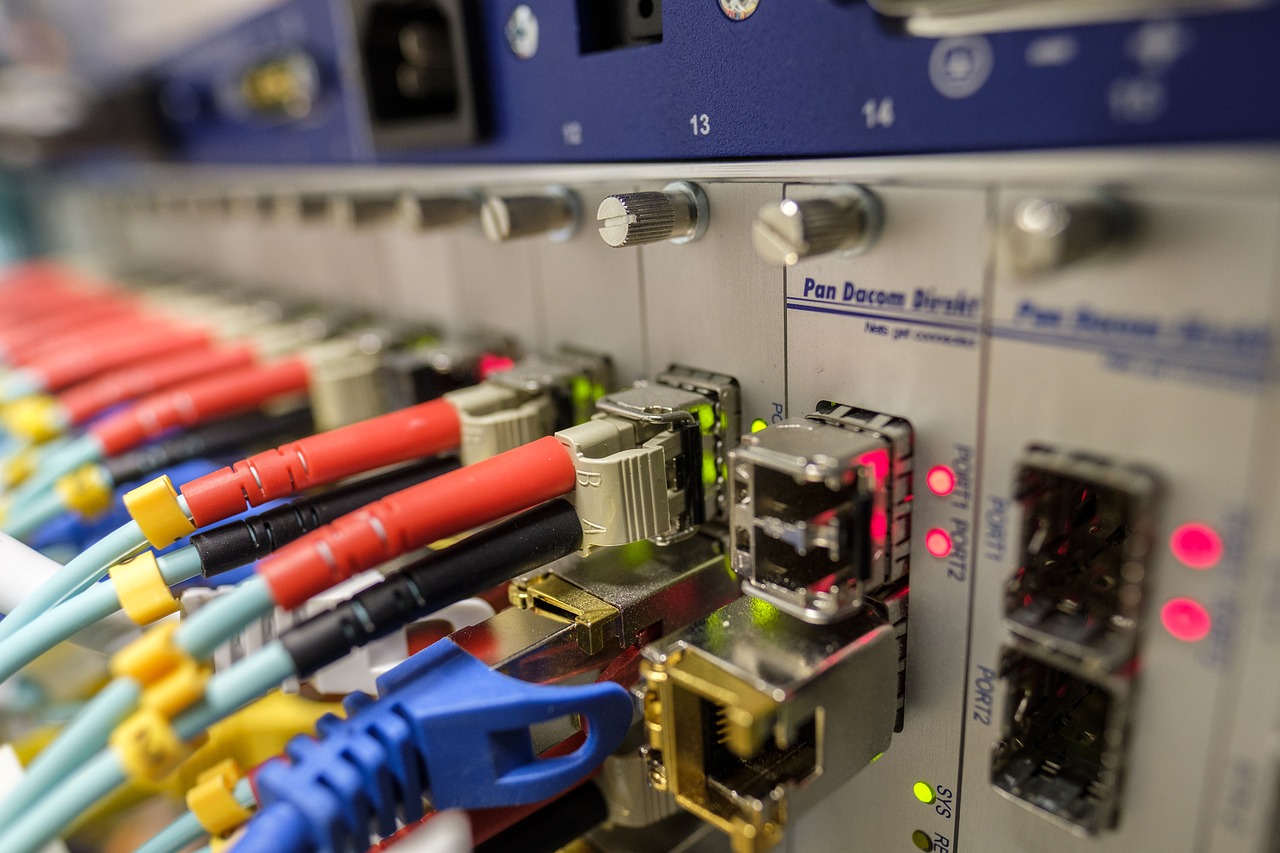Step-by-Step Guide to Installing FTTH SC APC/UPC Fiber Connectors

FTTH SC APC/UPC Fiber Fast Single Mode Fiber Quick Connector Connector plays a crucial role in modern fiber optic networks. These connectors ensure high-quality signal transmission, which is essential for reliable internet and communication services. SC APC connectors offer superior optical performance, making them ideal for applications requiring high precision and low return loss. In contrast, SC UPC connectors provide effective performance for less sensitive digital systems. Both types of connectors are widely used in various network setups, including residential, commercial, and industrial environments.
Understanding SC APC and SC UPC Connectors
Differences Between SC APC and SC UPC
Physical Differences
SC APC and SC UPC connectors have distinct physical characteristics. SC APC connectors feature an angled end face, which reflects light at an angle into the outer cladding layer. This design minimizes back reflection. SC UPC connectors, on the other hand, have a flat end face that reflects light straight back to the source. The color coding also differs: SC APC connectors are green, while SC UPC connectors are blue. These visual cues help technicians quickly identify the type of connector in use.
Performance Differences
The performance of SC APC and SC UPC connectors varies significantly. SC APC connectors offer a return loss value of -60dB or higher, providing superior optical performance. SC UPC connectors have a return loss value of -50dB or higher, which is slightly lower but still effective for many applications. SC APC connectors are more expensive due to their enhanced performance capabilities. Both connectors use high-quality ceramic ferrules to ensure low insertion loss and high return loss performance.
Advantages of SC APC Connectors
SC APC connectors provide several advantages in fiber optic networks. The angled physical contact reduces back reflection, which improves signal quality. This feature makes SC APC connectors ideal for high-precision optical fiber signaling. The superior return loss performance ensures stable and reliable connections, which is crucial for applications requiring high data integrity. The green color coding helps technicians easily identify SC APC connectors in complex network setups.
Advantages of SC UPC Connectors
SC UPC connectors also offer notable benefits. The flat end face design provides effective performance for less sensitive digital systems. SC UPC connectors are typically less expensive than SC APC connectors, making them a cost-effective choice for many installations. The blue color coding allows for quick identification, reducing the risk of errors during installation and maintenance. SC UPC connectors are widely used in various network environments, including residential and commercial settings.
Use Cases for Each Connector Type
SC APC connectors excel in high-precision optical fiber signaling. These connectors provide superior return loss performance, making them ideal for applications requiring high data integrity. SC APC connectors are commonly used in environments where signal quality is paramount. Examples include telecommunications, data centers, and high-speed internet services. The angled end face of SC APC connectors reduces back reflection, ensuring stable and reliable connections.
SC UPC connectors offer effective performance for less sensitive digital systems. These connectors are suitable for residential and commercial network setups. SC UPC connectors are often used in environments where cost-effectiveness is a priority. The flat end face design of SC UPC connectors provides adequate performance for many applications. Examples include home internet connections, office networks, and general-purpose data transmission.
Field installations benefit from the use of both SC APC and SC UPC connectors. FTTH SC APC/UPC Fiber Fast Single Mode Fiber Quick Connector Connectors allow for quick and easy termination of fibers. These connectors ensure stable performance during field installations. SC APC connectors are preferred for high-precision tasks, while SC UPC connectors are chosen for cost-effective solutions.
Telecommunications networks utilize SC APC connectors for their superior optical performance. These connectors ensure minimal signal loss and high return loss, which is crucial for maintaining high-quality communication services. SC UPC connectors are used in less demanding applications within the same networks, providing a balance between performance and cost.
Data centers rely on SC APC connectors for critical connections that require high data integrity. The superior return loss performance of SC APC connectors ensures reliable data transmission. SC UPC connectors are used for non-critical connections, offering a cost-effective solution without compromising overall network performance.
Residential and commercial buildings benefit from the use of SC UPC connectors. These connectors provide effective performance for everyday internet and communication needs. SC APC connectors are used in specific scenarios where high precision is required, such as in-home offices or commercial setups with high data demands.
Tools and Materials Needed

Essential Tools
Fiber Stripper
A fiber stripper is crucial for removing the protective coating from the optical fiber. This tool ensures precise stripping without damaging the delicate glass fiber inside. Proper use of a fiber stripper guarantees clean and accurate preparation of the fiber for connector installation.
Cleaver
A cleaver is necessary for cutting the optical fiber to the correct length with a clean, smooth end face. The quality of the cleave directly impacts the performance of the fiber connection. High-quality cleavers produce consistent results, reducing signal loss and improving overall connection reliability.
Connector Crimping Tool
The connector crimping tool secures the fiber within the connector housing. This tool applies the right amount of pressure to ensure a stable and durable connection. Using a high-quality crimping tool minimizes the risk of connection failures and maintains the integrity of the fiber optic network.
Required Materials
SC APC Connectors
SC APC connectors are essential for applications requiring high precision and low return loss. These connectors feature an angled end face that reduces back reflection and improves signal quality. SC APC connectors are ideal for high-bandwidth video transmissions and telecommunication networks.
SC UPC Connectors
SC UPC connectors provide effective performance for general data communications. These connectors have a flat end face that reflects light straight back to the source. SC UPC connectors are suitable for residential and commercial network setups where cost-effectiveness is a priority.
Cleaning Supplies
Cleaning supplies are vital for maintaining the cleanliness of the fiber and connectors. Dust and debris can significantly impact the performance of fiber optic connections. Use isopropyl alcohol and lint-free wipes to clean the fiber and connectors before installation. Proper cleaning ensures optimal signal transmission and reduces the risk of connection issues.
Step-by-Step Installation Guide
Preparing the Fiber
Stripping the Fiber
Use a fiber stripper to remove the protective coating from the optical fiber. Ensure precise stripping without damaging the delicate glass fiber inside. Proper use of a fiber stripper guarantees clean and accurate preparation of the fiber for connector installation.
Cleaning the Fiber
Clean the stripped fiber using isopropyl alcohol and lint-free wipes. Remove all dust and debris to ensure optimal signal transmission. Proper cleaning reduces the risk of connection issues and maintains the integrity of the fiber optic network.
Installing the Connector
Inserting the Fiber into the Connector
Insert the cleaned fiber into the SC APC or SC UPC connector. Align the fiber carefully to avoid any misalignment. Push the fiber gently until it reaches the end of the connector. Ensure that the fiber is properly seated within the connector housing.
Crimping the Connector
Use a connector crimping tool to secure the fiber within the connector housing. Apply the right amount of pressure to ensure a stable and durable connection. High-quality crimping tools minimize the risk of connection failures and maintain the integrity of the fiber optic network.
Testing the Connection
Using a Visual Fault Locator
Use a visual fault locator (VFL) to test the connection. The VFL emits a visible red light that helps identify breaks or faults in the fiber. Connect the VFL to the installed connector and observe the light path. Any interruptions indicate potential issues that need addressing.
Checking for Signal Loss
Use an optical power meter to check for signal loss. Measure the power levels at both ends of the fiber connection. Compare the readings to ensure minimal signal loss. Proper testing ensures that the connection meets performance standards and provides reliable signal transmission.
Troubleshooting and Tips
Common Mistakes to Avoid
Improper Stripping
Improper stripping of the fiber can lead to significant issues. Using a fiber stripper incorrectly can damage the delicate glass fiber inside. Damaged fibers result in poor signal transmission and increased signal loss. Always ensure precise stripping to maintain the integrity of the fiber.
Incorrect Crimping
Incorrect crimping can compromise the stability of the connection. Applying too much or too little pressure with the crimping tool can result in a weak or unstable connection. A weak connection can cause intermittent signal loss and connection failures. Use a high-quality crimping tool and apply the right amount of pressure to secure the fiber properly.
Troubleshooting Tips
Identifying Poor Connections
Identifying poor connections is crucial for maintaining network performance. Use a visual fault locator (VFL) to detect breaks or faults in the fiber. The VFL emits a visible red light that helps identify any interruptions in the light path. Observing the light path can help pinpoint the exact location of the issue.
Fixing Signal Loss Issues
Fixing signal loss issues involves several steps. First, check the cleanliness of the fiber and connectors. Dust and debris can cause significant signal loss. Clean the fiber and connectors using isopropyl alcohol and lint-free wipes. Next, ensure that the fiber is properly seated within the connector housing. Misalignment can lead to increased signal loss. Finally, use an optical power meter to measure the power levels at both ends of the fiber connection. Compare the readings to ensure minimal signal loss. Proper testing ensures that the connection meets performance standards and provides reliable signal transmission.
The installation process for FTTH SC APC/UPC fiber connectors involves several critical steps. Proper installation ensures optimal performance and reliability. Following each step carefully guarantees a stable connection. The benefits of using SC APC/UPC connectors include superior signal quality and cost-effectiveness. High-quality tools and materials, such as fiber strippers, cleavers, and cleaning supplies, contribute to successful installations. Adhering to these guidelines will result in efficient and reliable fiber optic networks.
See Also
Top 5 Tips for Installing SC/APC Field Connectors in FTTH
Comprehending SC/APC Single-Mode Fiber Optic Connector in FTTH
Complete Handbook on 3M SC/APC Blue Fast Connector
Overcoming Fiber Interconnection Hurdles with SC UPC Connectors
Exploring Key Features of 55mm Fiber Optic Field Assembly Connector


